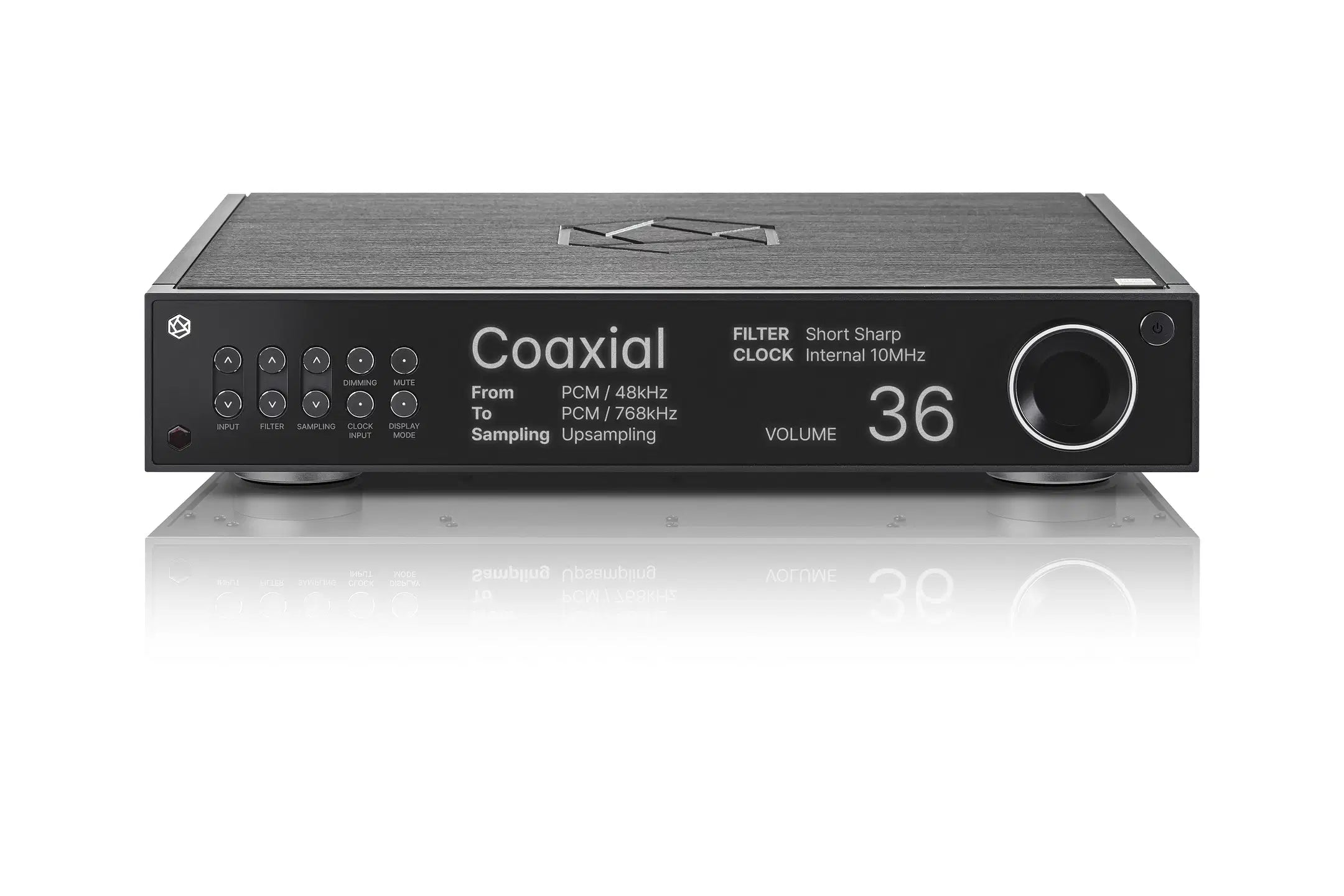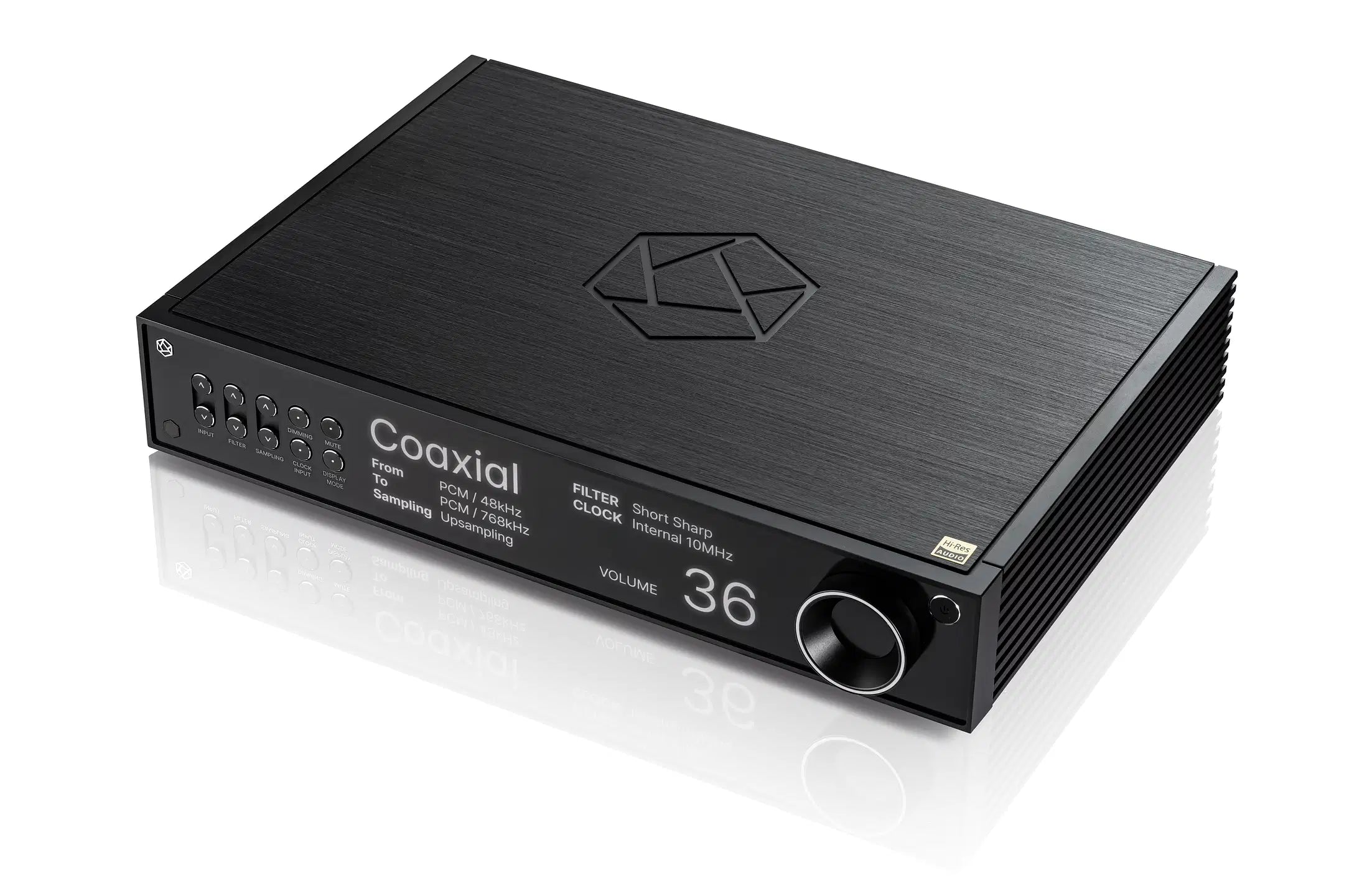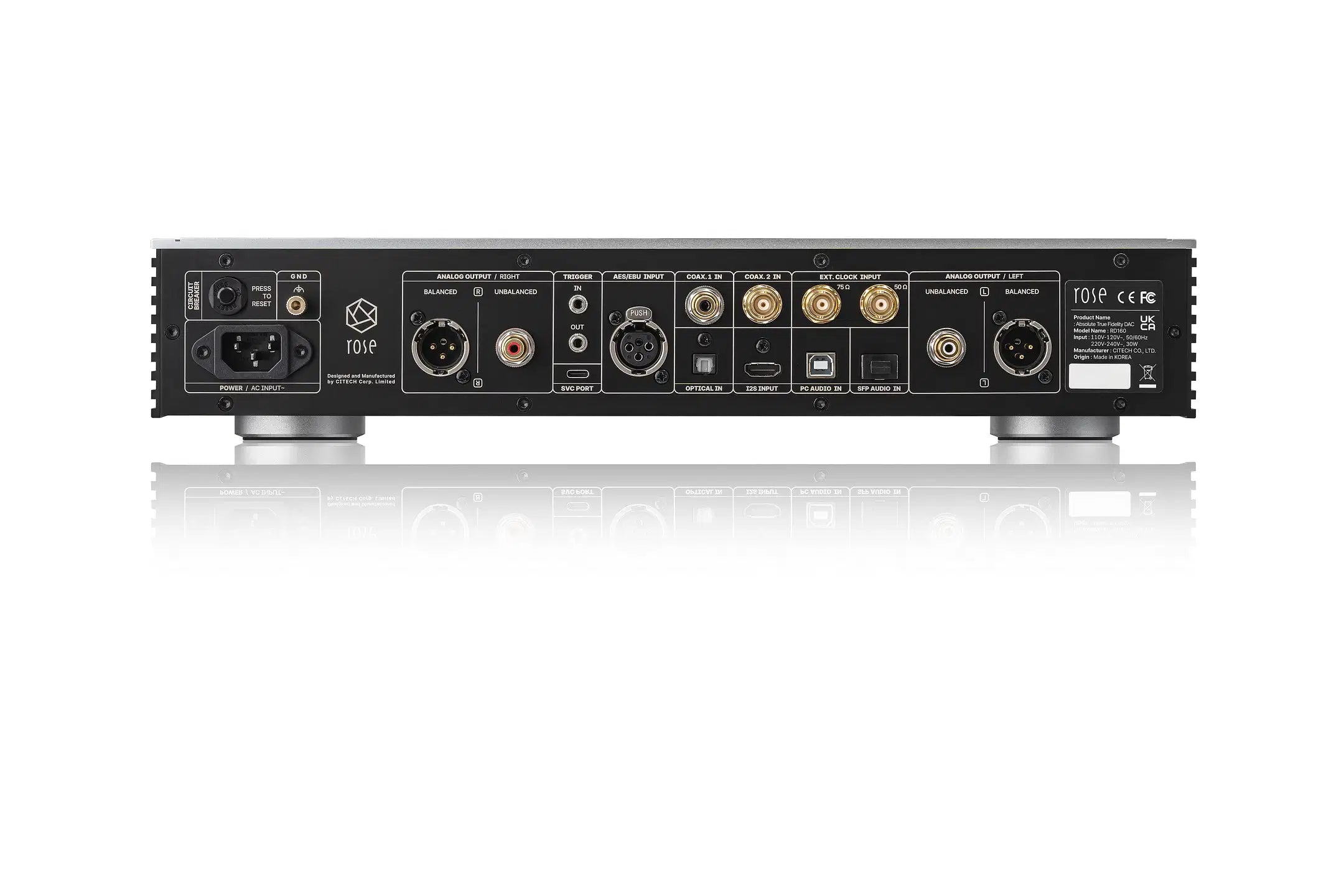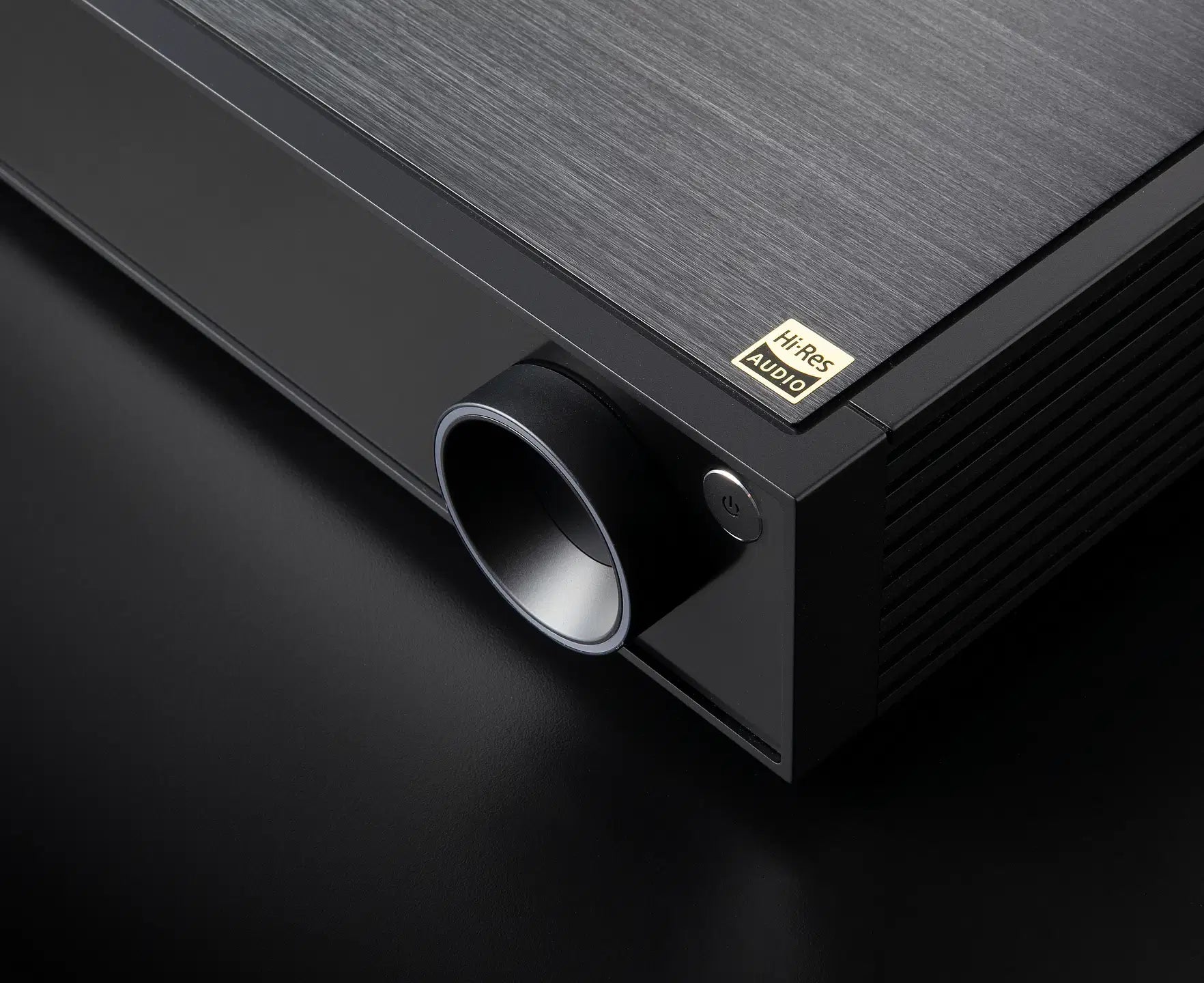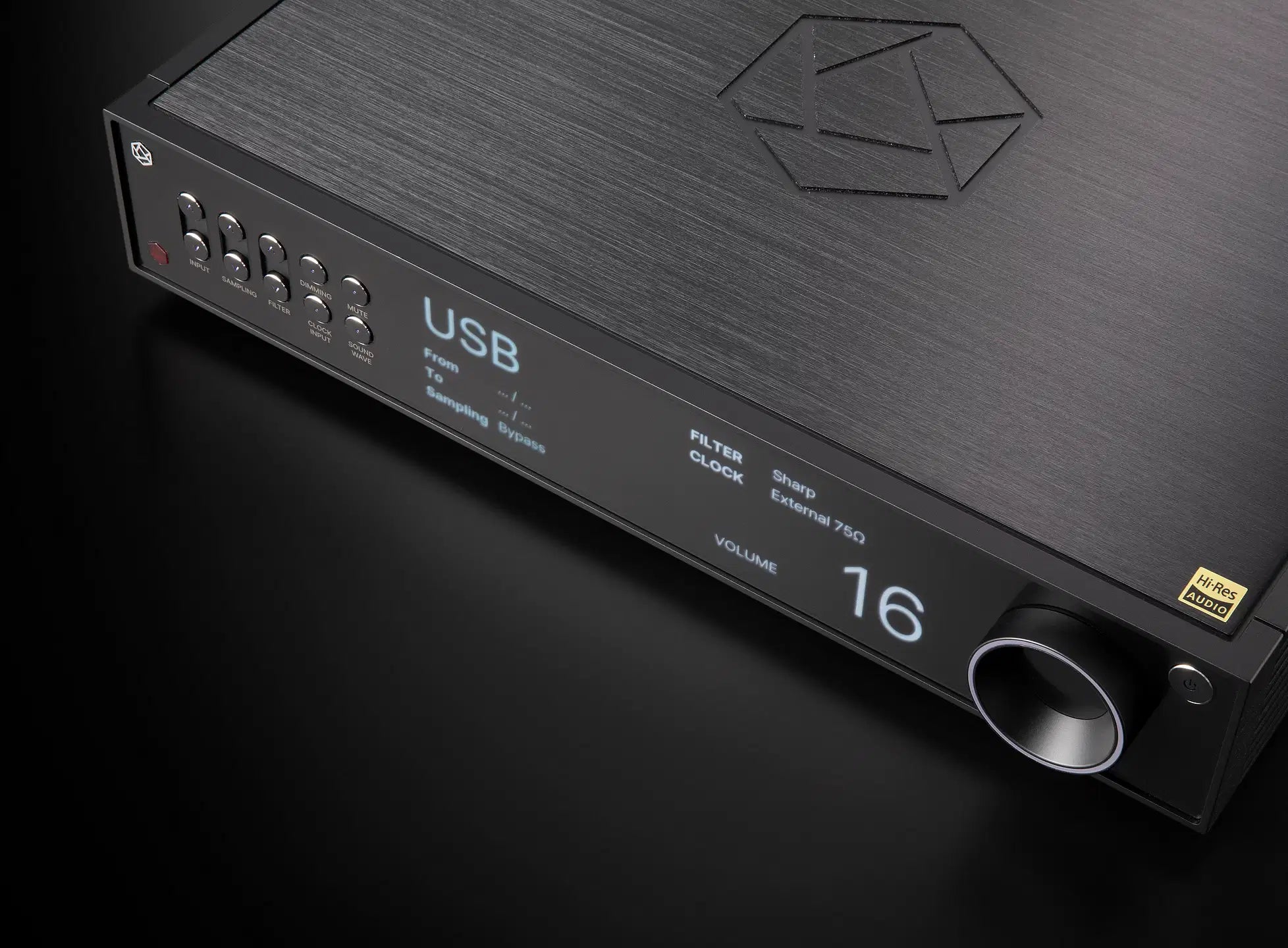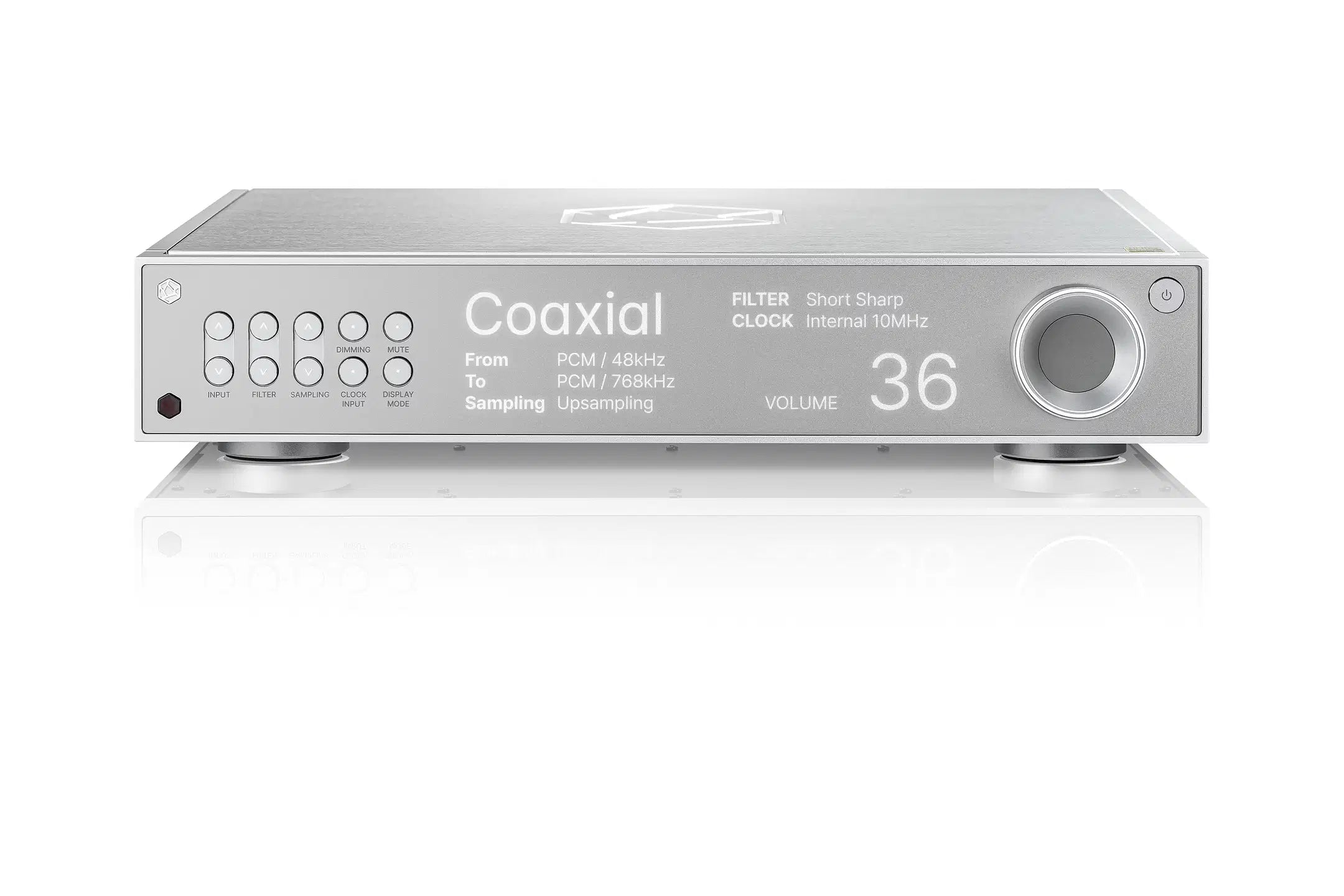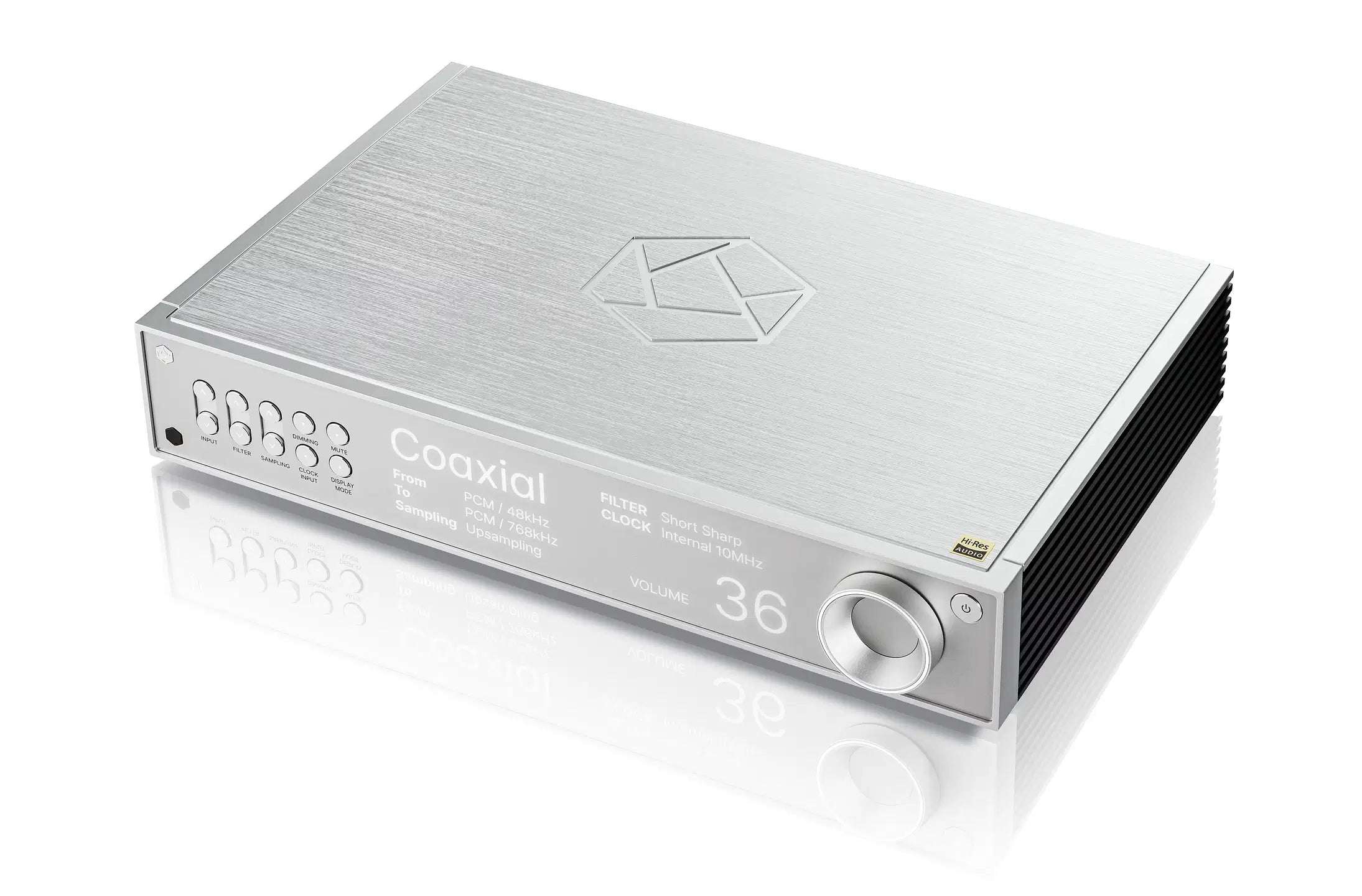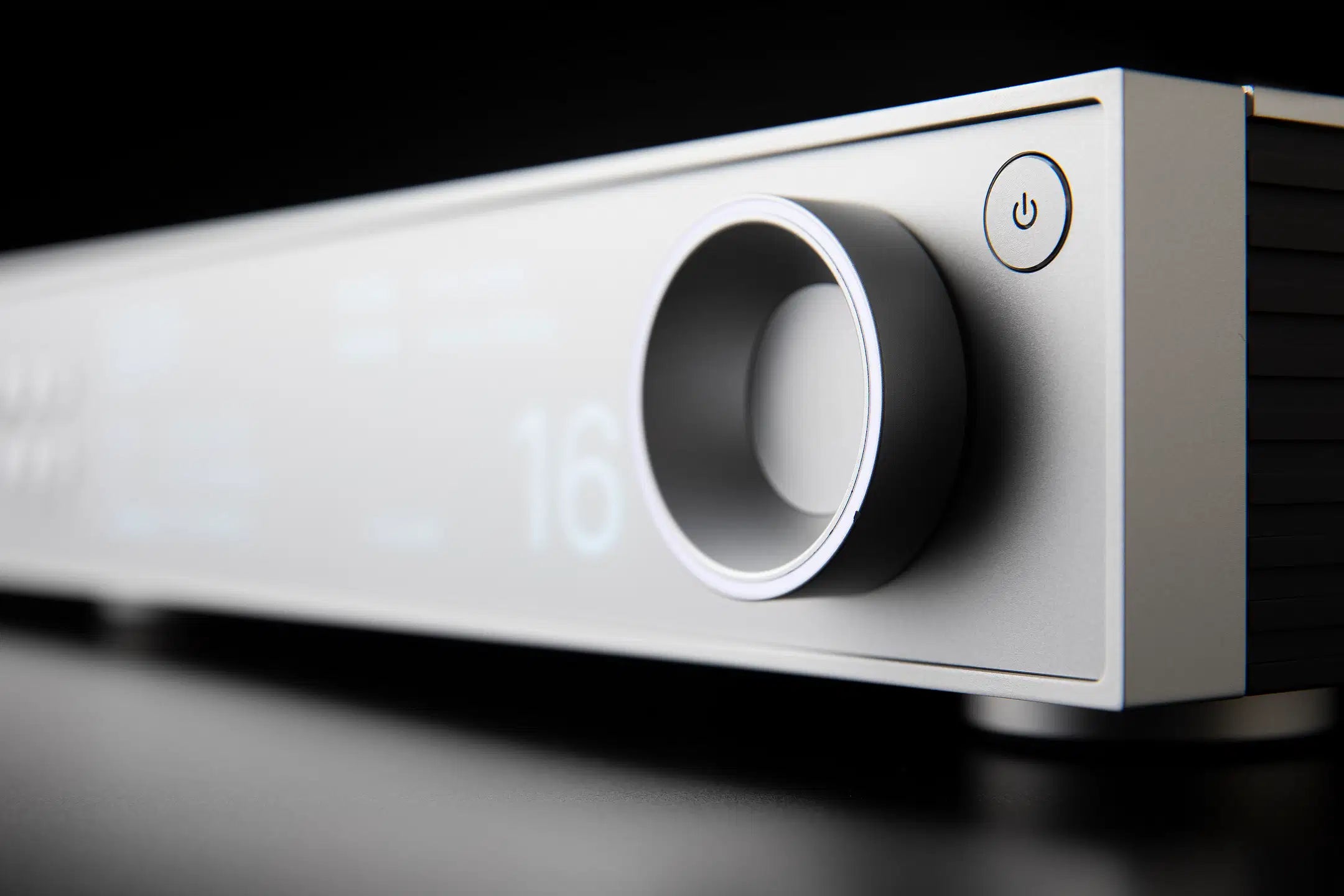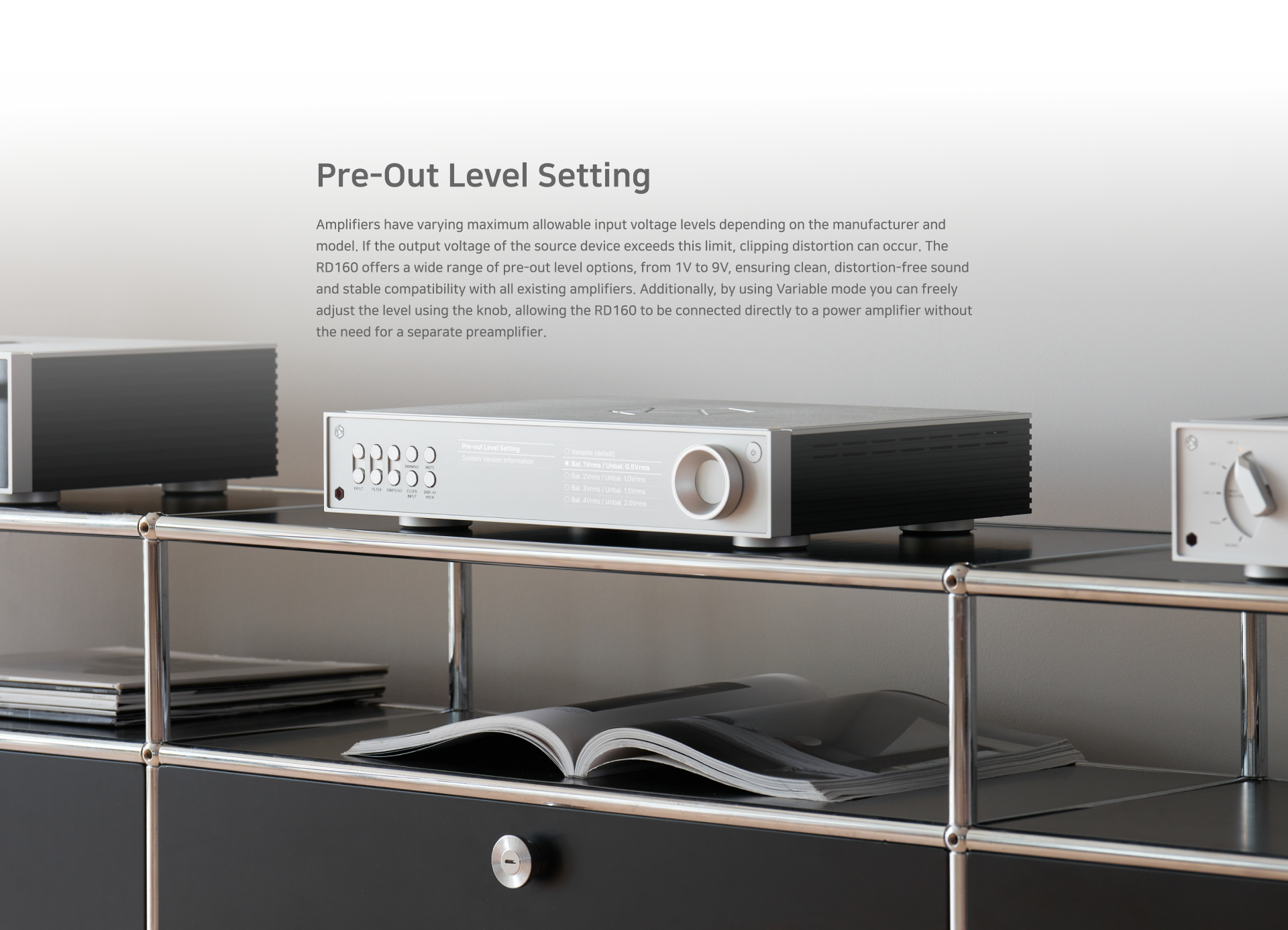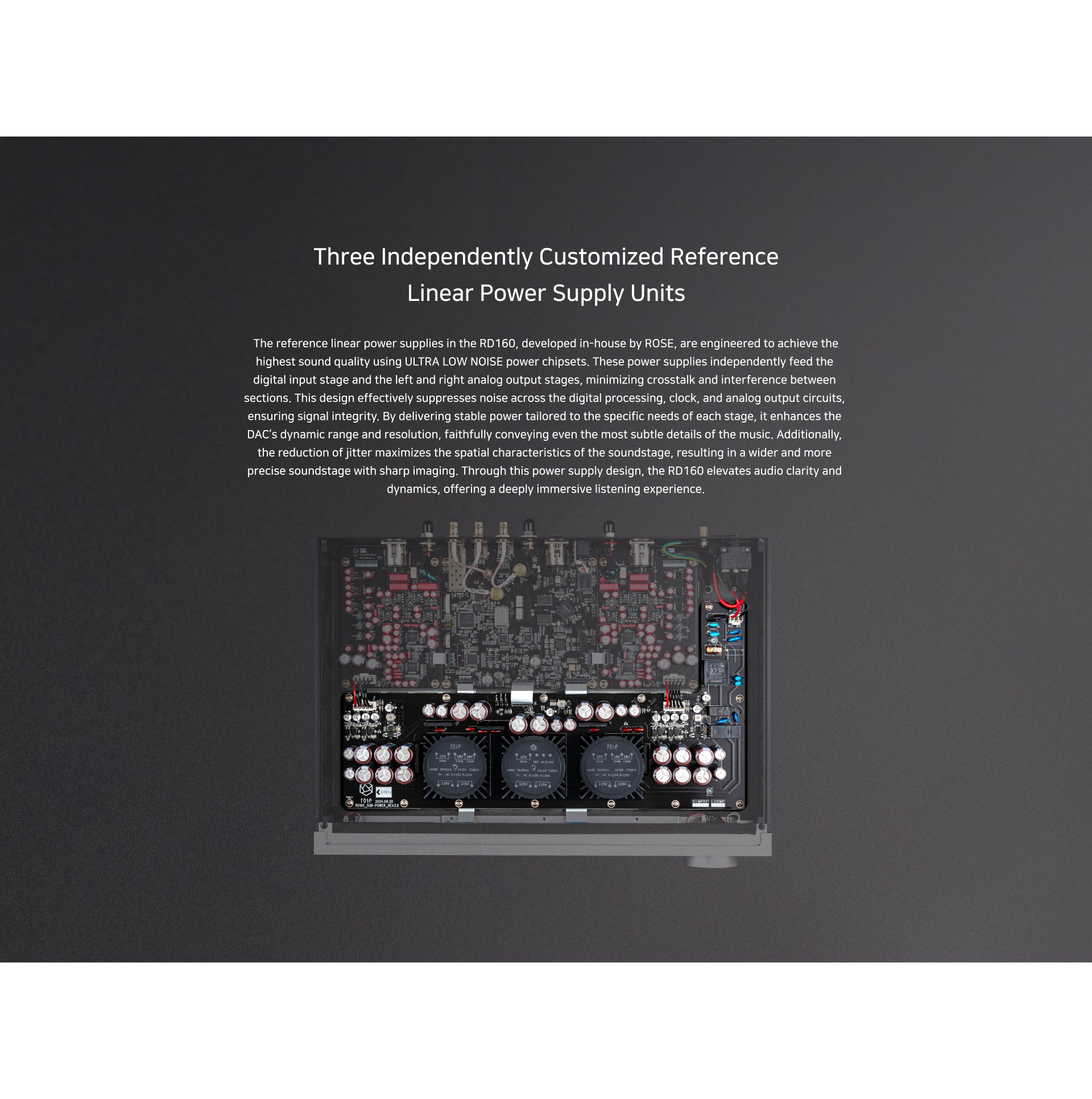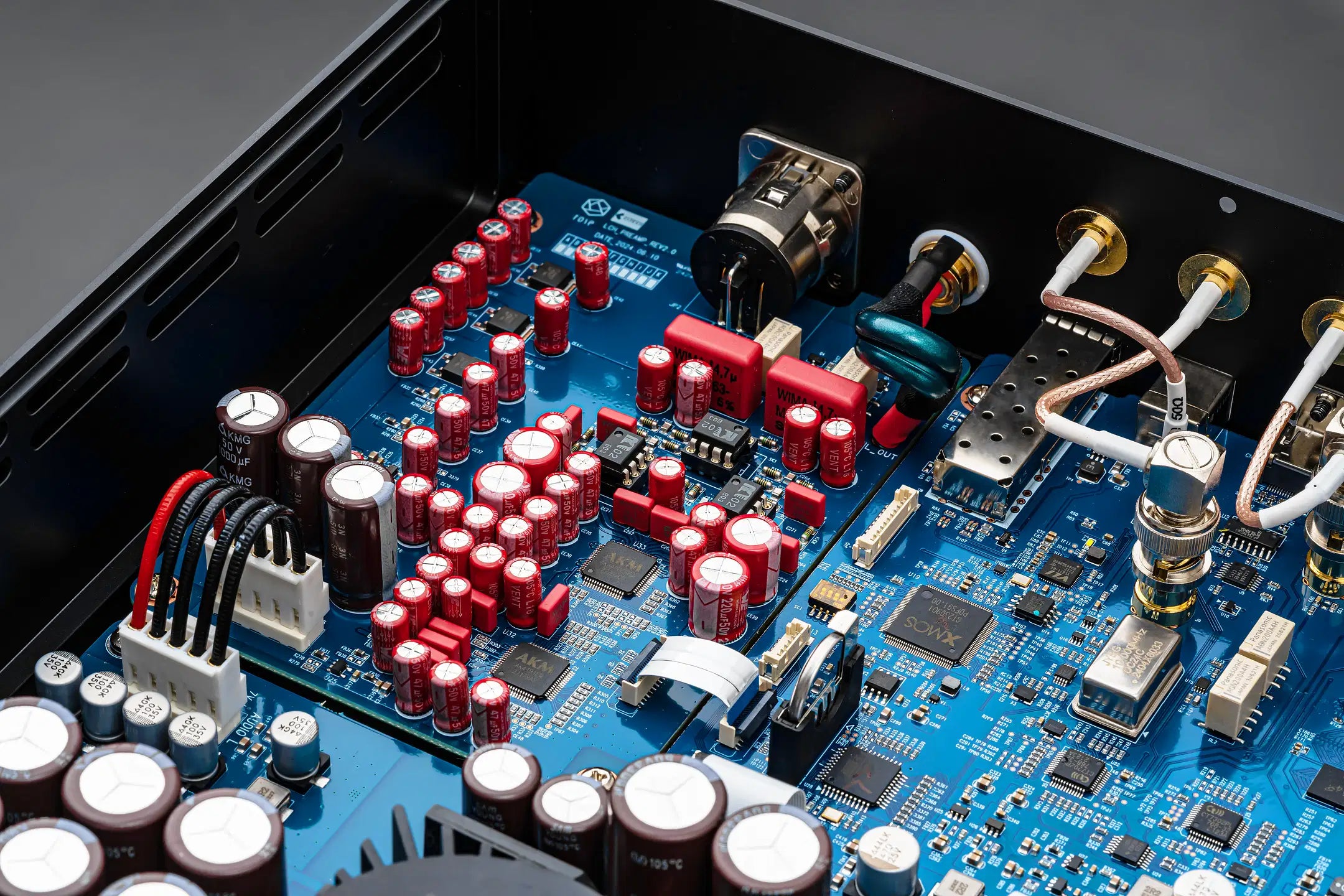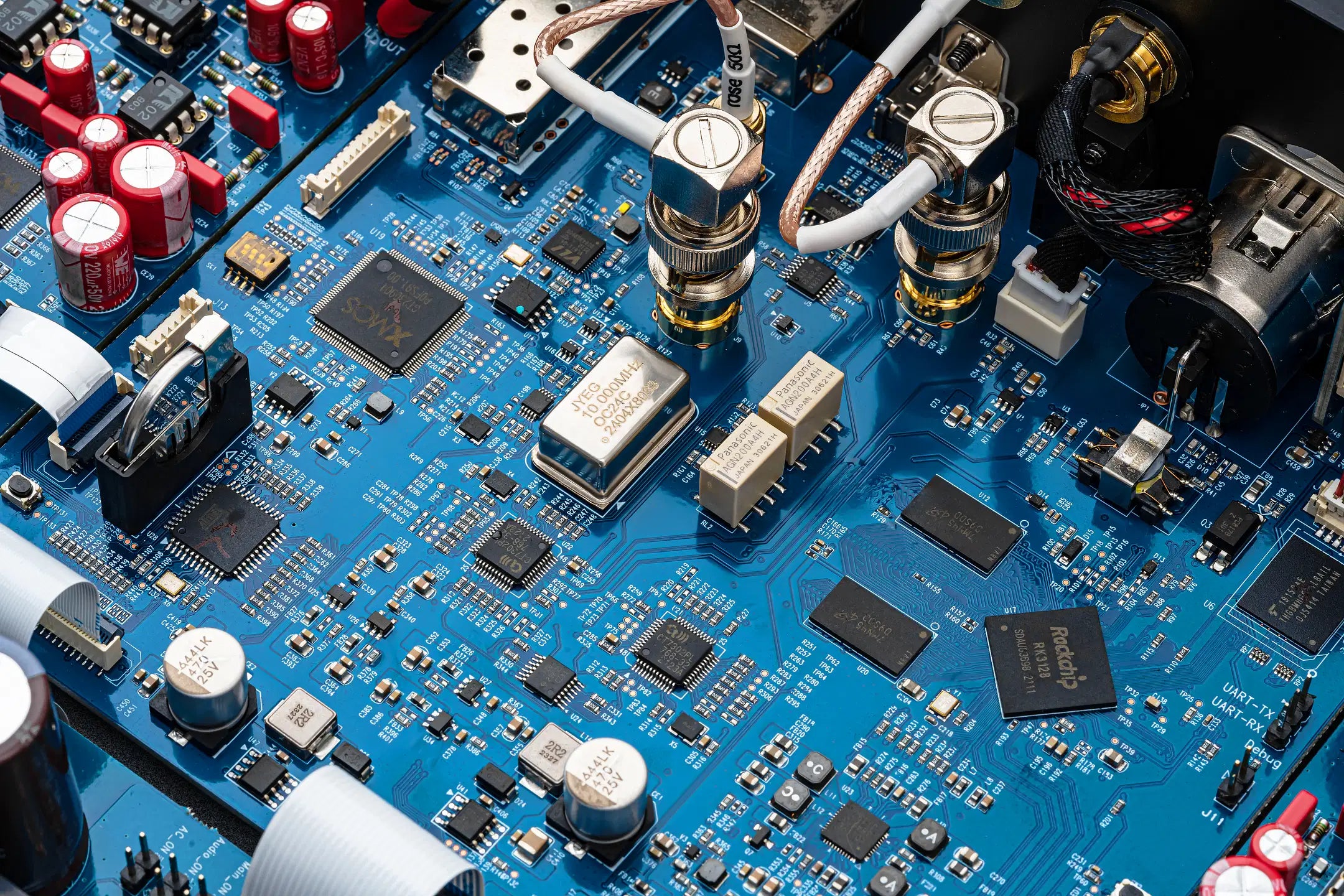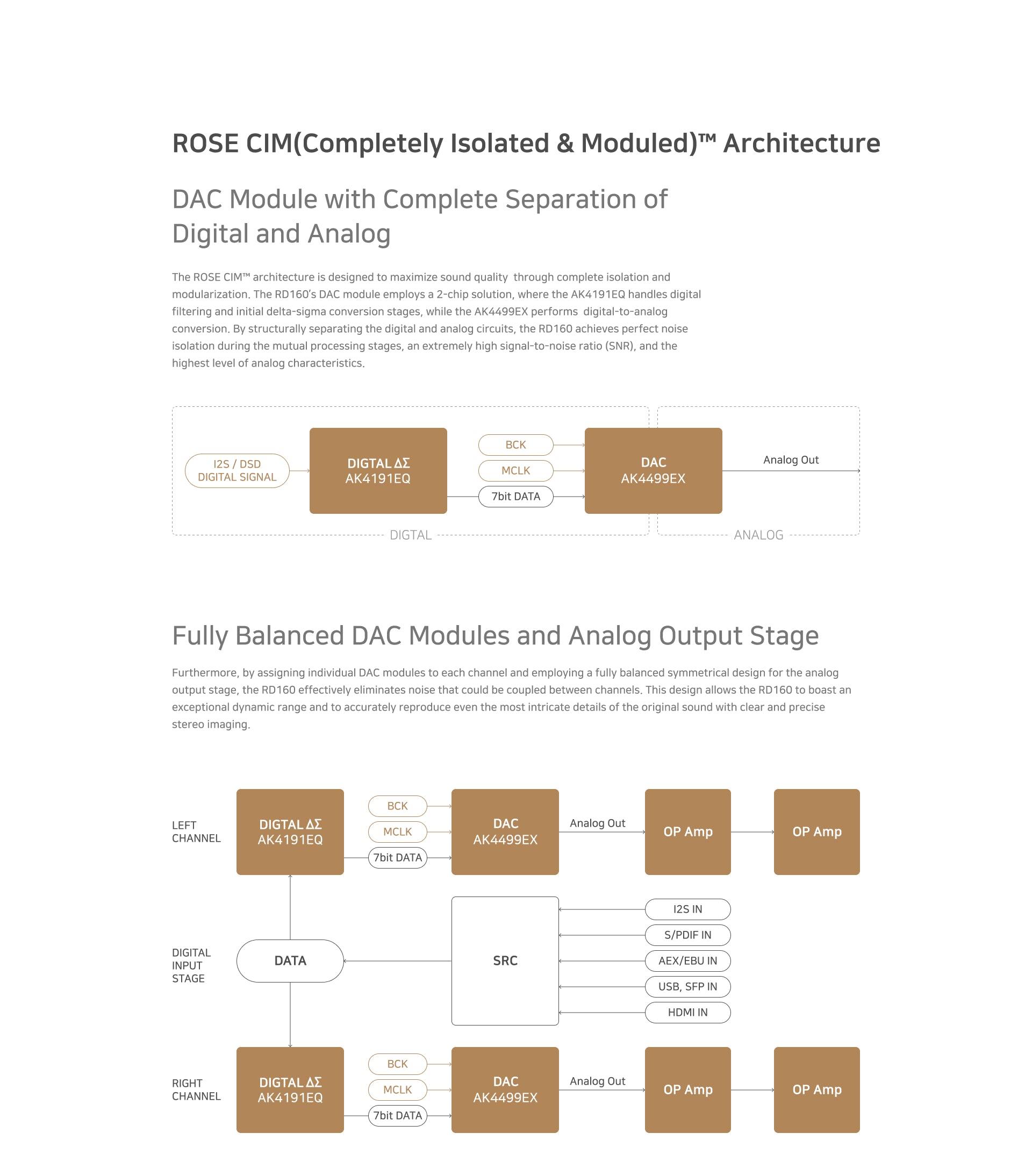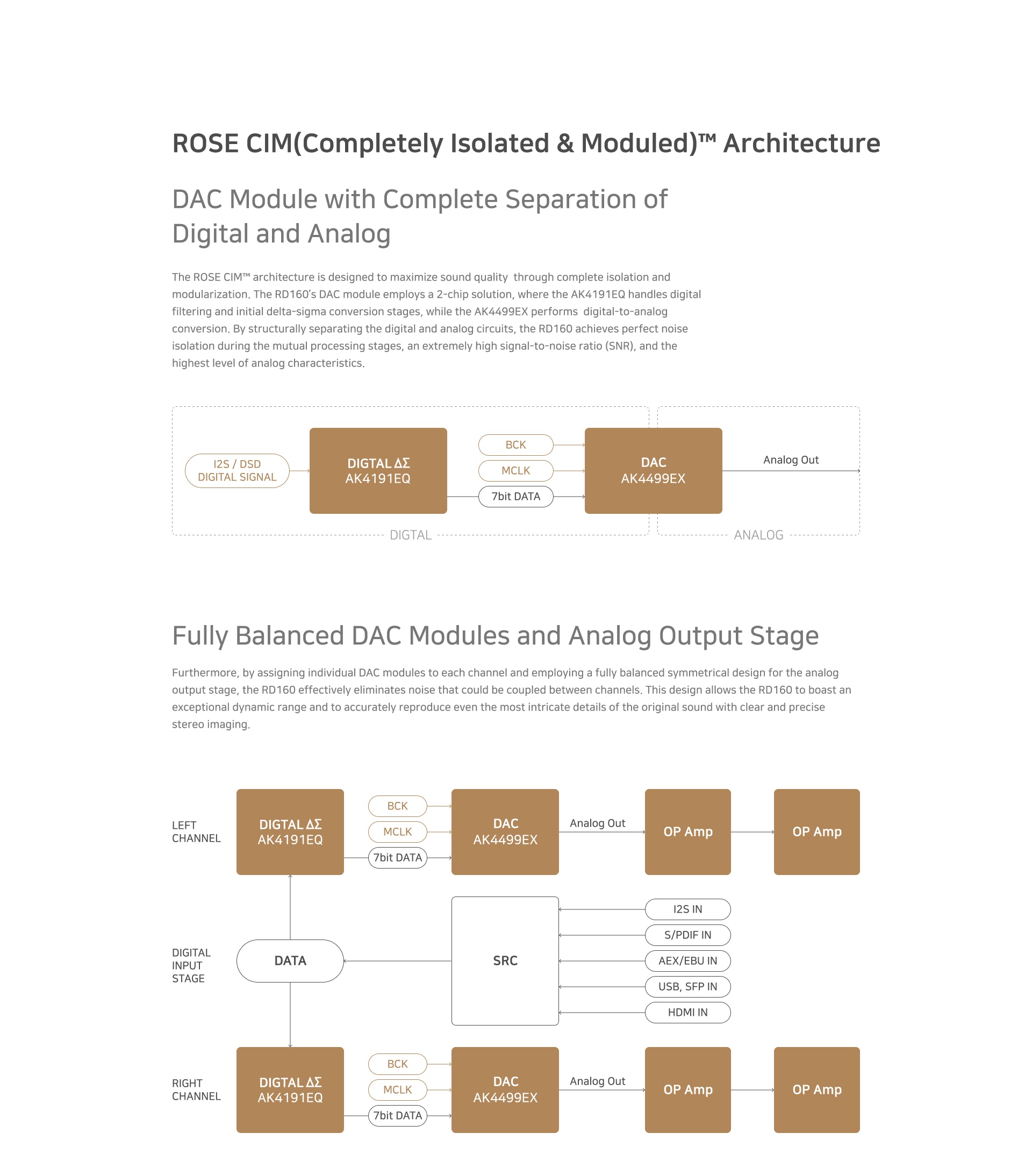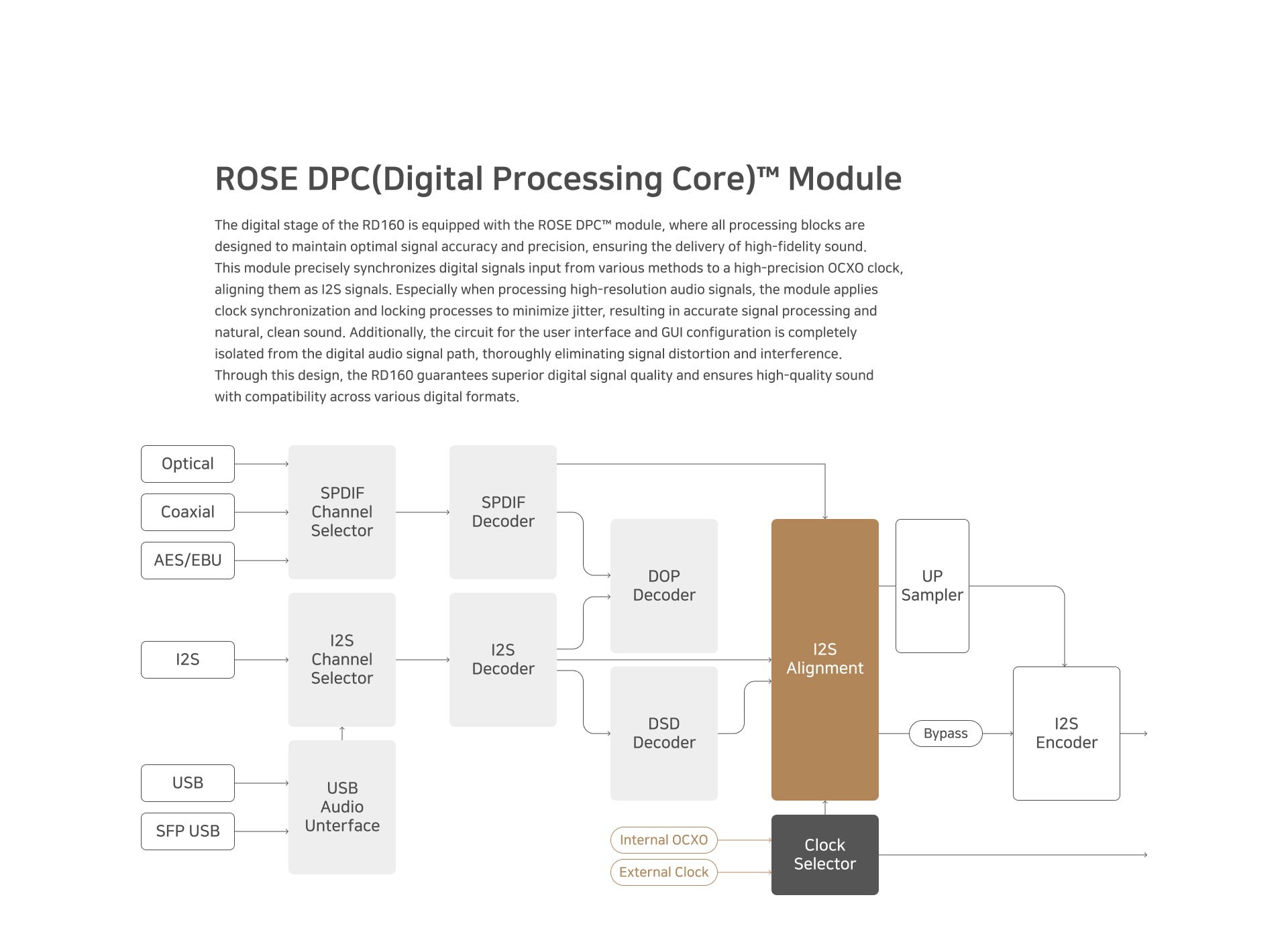Offers and product news directly to your email
HiFi ROSE RD160 improves sound quality by using advanced technology. It is designed to provide cleaner and more accurate sound through a digital processing module, digital and analog signal separation, and a balanced circuit that preserves signal quality. With three independent power supplies and interference filters, it reproduces sounds in detail, bringing a new dimension to the audio experience.
Stylish and innovative design
The HiFi ROSE RD160 stands out with its unique and refined design. The housing is machined from a single piece of aluminum, minimizing joints and reducing vibrations. Available in silver or black, it proudly bears the famous HiFi ROSE embossed symbol on the top panel. The side panels contain heat-dissipating heat sinks that optimize the cooling of the internal components.
The minimalist front panel hides an OLED display that lights up when the device is powered on and displays various information in real time, such as the DAC's operating diagram, volume curve and sound waves. The buttons and rotary encoder provide direct and lag-free control, providing an intuitive analog experience despite the device's digital core.
Complete connectivity for broad compatibility
The RD160 has a comprehensive range of digital connections to suit all types of sources:
USB fiber optic for a clean and interference-free signal
The USB fiber optic connection is a notable feature of the RD160. It converts the electrical USB signal into a light signal, eliminating interference and distortion caused by the source device. When combined with HiFi ROSE's RS130 streamer, which also supports this connection, the RD160 produces exceptionally clean sound.
ROSE CIM architecture for high-end audio performance
ROSE CIM (Completely Isolated and Modulated) architecture aims to maximize sound quality through complete isolation and modulation. The RD160 uses separate DAC modules for each channel and a dual-chip solution that completely isolates the digital signal processing and analog conversion stages. This ensures faithful and transparent reproduction of the original hi-res audio data without distortion.
Three independent linear power supplies, specially designed for the digital input and analog output stages, effectively prevent power supply interference. With exceptional balance, ultra-low distortion and noise levels, the RD160 delivers realistic and dynamic sound.
Timing at the core of performance
In digital audio, timing accuracy is essential for optimal sound quality. The RD160 features a high-precision OCXO (Oven Controlled Crystal Oscillator) that provides excellent clock stability and accuracy. It can also be synchronized to an external master clock, such as the RS130 streamer. Connecting all digital components to the same reference clock completely eliminates jitter and enables the transmission of digital audio signals with unprecedented purity.
What are the benefits of the ROSE CIM architecture?
The ROSE CIM™ architecture offers several advantages: complete isolation between the digital and analog stages with separate DAC modules per channel, the use of three separate power supplies for effective noise suppression, and the end result is clean and dynamic sound with very low distortion and minimal background noise.
Why is optical USB connection interesting?
Optical USB converts an electrical signal into a light signal, eliminating noise and distortion from the source. When combined with an RS130 streamer that also supports this connection, the RD160 benefits from ultra-pure digital signal transfer, ensuring optimal sound quality.
What is the advantage of using an external master clock with the RD160?
Connecting the RD160 and other digital components to a common master clock allows them to be perfectly synchronized. This completely eliminates jitter from S/PDIF or AES/EBU digital connections and ensures the transmission of digital audio signals with unprecedented purity, enabling optimal sound quality.
What are the connection options for the RD160?
The RD160 has a wide range of digital inputs: USB, optical USB, I2S, optical S/PDIF, coaxial and AES/EBU. It is therefore compatible with almost all digital sources on the market. Its balanced and unbalanced analog outputs allow it to be connected to any hi-fi system.
Key points about HiFi ROSE's RD160:
Specifications
Output characteristics
Converter and sampling
Built-in system
Digital inputs
Analog outputs:
Features and control
General
HiFi ROSE RD160 improves sound quality by using advanced technology. It is designed to provide cleaner and more accurate sound through a digital processing module, digital and analog signal separation, and a balanced circuit that preserves signal quality. With three independent power supplies and interference filters, it reproduces sounds in detail, bringing a new dimension to the audio experience.
Stylish and innovative design
The HiFi ROSE RD160 stands out with its unique and refined design. The housing is machined from a single piece of aluminum, minimizing joints and reducing vibrations. Available in silver or black, it proudly bears the famous HiFi ROSE embossed symbol on the top panel. The side panels contain heat-dissipating heat sinks that optimize the cooling of the internal components.
The minimalist front panel hides an OLED display that lights up when the device is powered on and displays various information in real time, such as the DAC's operating diagram, volume curve and sound waves. The buttons and rotary encoder provide direct and lag-free control, providing an intuitive analog experience despite the device's digital core.
Complete connectivity for broad compatibility
The RD160 has a comprehensive range of digital connections to suit all types of sources:
USB fiber optic for a clean and interference-free signal
The USB fiber optic connection is a notable feature of the RD160. It converts the electrical USB signal into a light signal, eliminating interference and distortion caused by the source device. When combined with HiFi ROSE's RS130 streamer, which also supports this connection, the RD160 produces exceptionally clean sound.
ROSE CIM architecture for high-end audio performance
ROSE CIM (Completely Isolated and Modulated) architecture aims to maximize sound quality through complete isolation and modulation. The RD160 uses separate DAC modules for each channel and a dual-chip solution that completely isolates the digital signal processing and analog conversion stages. This ensures faithful and transparent reproduction of the original hi-res audio data without distortion.
Three independent linear power supplies, specially designed for the digital input and analog output stages, effectively prevent power supply interference. With exceptional balance, ultra-low distortion and noise levels, the RD160 delivers realistic and dynamic sound.
Timing at the core of performance
In digital audio, timing accuracy is essential for optimal sound quality. The RD160 features a high-precision OCXO (Oven Controlled Crystal Oscillator) that provides excellent clock stability and accuracy. It can also be synchronized to an external master clock, such as the RS130 streamer. Connecting all digital components to the same reference clock completely eliminates jitter and enables the transmission of digital audio signals with unprecedented purity.
What are the benefits of the ROSE CIM architecture?
The ROSE CIM™ architecture offers several advantages: complete isolation between the digital and analog stages with separate DAC modules per channel, the use of three separate power supplies for effective noise suppression, and the end result is clean and dynamic sound with very low distortion and minimal background noise.
Why is optical USB connection interesting?
Optical USB converts an electrical signal into a light signal, eliminating noise and distortion from the source. When combined with an RS130 streamer that also supports this connection, the RD160 benefits from ultra-pure digital signal transfer, ensuring optimal sound quality.
What is the advantage of using an external master clock with the RD160?
Connecting the RD160 and other digital components to a common master clock allows them to be perfectly synchronized. This completely eliminates jitter from S/PDIF or AES/EBU digital connections and ensures the transmission of digital audio signals with unprecedented purity, enabling optimal sound quality.
What are the connection options for the RD160?
The RD160 has a wide range of digital inputs: USB, optical USB, I2S, optical S/PDIF, coaxial and AES/EBU. It is therefore compatible with almost all digital sources on the market. Its balanced and unbalanced analog outputs allow it to be connected to any hi-fi system.
Key points about HiFi ROSE's RD160:
Specifications
Output characteristics
Converter and sampling
Built-in system
Digital inputs
Analog outputs:
Features and control
General

